| |
Eleven Tapped for Honorary AIA Membership
Summary: Please join us in welcoming 11 very special people into the AIA family. Despite disparate roles, they all are people who, although not architects by profession, have offered distinguished service to the profession of architecture or the allied arts and sciences and thus have made all of our lives richer. One of the most important messages we share is our gratitude toward those who support and uplift architects and architecture; in this spirit, the Institute is very pleased to bestow on these individuals the title of Honorary AIA.
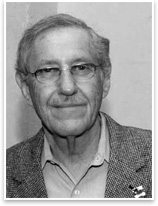 Mijel Brazlavsky, Hon. AIA Mijel Brazlavsky, Hon. AIA
As executive director of the AIA Miami Chapter since 1998, one of Brazlavsky’s first considerations was to enhance the rate of architecture graduates who achieve licensure. With enhanced outreach and training, the chapter saw an increased pass rate of 90 percent. Brazlavsky dedicates himself also to reach K-12 students to encourage their pursuit of architectural education. His multi-cultural and bilingual political involvement—both within Miami Dade County and internationally—have brought significant recognition to the contributions of architects in the community and beyond. During his 10 years, the AIA Miami membership has doubled and continues to grow as he connects members to their AIA, one result of which is that Miami will be the site of the AIA 2010 National Convention. “During his time as executive director of the chapter, Mike has completely professionalized the operation of the chapter—increasing membership and sponsorships and radically improving the activities, initiatives, and overall operations of the chapter,” writes former AIA Miami President Michael Kerwin, AIA. “Through his outreach to allied professions and to the architectural firms, Mike has become a fixture on the AIA architecture scene.”
 John Canning, Hon. AIA John Canning, Hon. AIA
A specialist in decorative arts restoration, Canning “is a skilled artisan in all periods of decorative arts, from 18th century gilding and fresco painting to 20th century Beaux Arts mural restoration and reproduction finishes,” writes nominator Sharon C. Park, FAIA, on behalf of the AIA Historic Resources Committee. In the 45 years from his education in his native Glasgow, Scotland, to now, Canning has mastered his artistry in graining, marbling, stenciling, glazing, trompe l’oeil, gilding, and fine art murals, which he has applied in the U.S. in projects including the White House, U.S. Capitol, Boston’s Trinity Church, Radio City Music Hall, the National Building Museum, and dozens of others. “John brought his knowledge and skills to the Unites States in the early 1970s, just as historic preservation movement was gaining momentum,” writes Smithsonian Institution Curator Marjorie Hunt, PhD. “A pivotal force in the preservation of historic American architecture, John Canning and his talented team of decorative painters have restored many of our nation’s most historic buildings.”
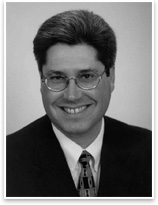 David Crawford, Hon. AIA David Crawford, Hon. AIA
With a refined expertise in planning and executing learning, leadership, and advocacy opportunities for AIA members, AIA North Carolina Executive Vice President Crawford has devoted 20 years to the AIA in the South Atlantic Region, his home state of California, and the national AIA Board of Directors. A seasoned lobbyist and ardent supporter of the profession, Crawford served as the 2006 president of the Council of Architectural Component Executives while overseeing the establishment of the AIA North Carolina Center for Architecture and Design. During his tenure, his component has increased its membership by 25 percent, with a 95 percent membership retention rate. “In serving architects, David Crawford displays the qualities that make a good architect,” writes Frank Harmon, FAIA. “He is an active listener, he expresses ideas clearly in written and spoken word, and he has a compelling vision of how architecture can serve society. His diplomacy is highly regarded at the local, state, and national levels of government … David Crawford has measurably improved the standard of the profession in our state and beyond.”
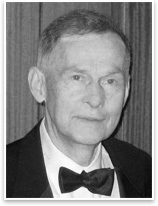 Dean E. Eastman, Hon. AIA Dean E. Eastman, Hon. AIA
While fulfilling his duties as a physics professor at the University of Chicago, Eastman took on the Herculean task of purchasing and restoring the Frank Lloyd Wright 1907 Avery Coonley House. Eastman oversaw the stabilization of the structure, acquisition of suitable historic and replacement materials, and restoration of the original Jens Jensen landscape plan. He continued his initial five-year restoration effort by acquiring and restoring the coach house of the home Wright described as “the best I could do in way of a house.” (Eastman bought and repaired the coach house while the owner and resident for 52 years lived out the remainder of her life, rent-free from the time of his 2005 purchase.) The Frank Lloyd Wright Building Conservancy conferred its 2004 Wright Spirit Award on Eastman for the restoration effort. “Dean Eastman has taken the research and discovery journey to new heights in his restoration of the Coonley House” writes Gaines Hall, FAIA, who himself restored Wright’s Kankakee, Ill., Bradley House for posterity’s sake.
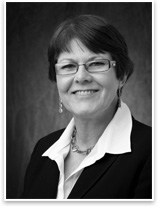 Amy M. Kobe, Hon. AIA Amy M. Kobe, Hon. AIA
As executive director of the Ohio Architects Board and Ohio Board of Examiners of Landscape Architects since 2004, Kobe is responsible for overall management of both licensing boards and staff, development of statutes and rules regulating architecture and landscape architecture, and budget development. She represents the boards before the state general assembly and edits the board newsletters. “Amy is one of the most accessible public officials I know,” writes 2008 AIA Columbus President Lane J. Beougher, AIA. Kobe also served as AIA Columbus executive director from 1998 to 2004. “I have never seen an individual in a state government position champion the causes of the profession like Amy has championed those of architects,” writes 2005 AIA President Douglas L Steidl, FAIA. “She operates very effectively within the bureaucracy, but is not a bureaucrat. She is an advocate for architects and interns within government agencies and the legislature. Amy makes things happen for the betterment of the profession and the individual. Her vision is astounding.”
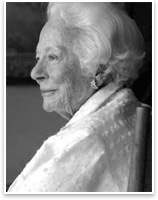 Margaret McDermott, Hon. AIA Margaret McDermott, Hon. AIA
An extraordinary benefactor to the architectural excellence of Dallas, McDermott has contributed many million of dollars to projects such as the Central Dallas Library renovation, Calatrava’s Trinity River bridge, Wily Theater by Rem Koolhaas, and Winspear Opera House by Foster + Partners. She also endowed the Hal Box Architecture Chair at the University of Texas and Eugene McDermott Scholars Program at UT-Dallas. McDermott was instrumental in the commissioning of I.M. Pei for the Meyerson Symphony Center and drove home the directive that all Dallas County community colleges be designed by regional architects. “Ms. McDermott has been an Honorary TSA member since 2005, when she was recognized for her inspiring, incredible—and continuing—support of architecture, the arts, and education in Texas,” writes AIA Texas Executive Vice President David Lancaster, Hon. AIA. “Not only has she done—and continues to do—all that’s cited in her nomination, she inspires others to do likewise.”
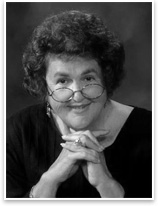 Jane Nylander, Hon. AIA Jane Nylander, Hon. AIA
Jane Nylander has devoted her life to the preservation and understanding of the daily lives of early Americans for more than 40 years, concentrating during the last two decades on preservation and conservation of historic buildings of New England that has brought her international recognition. She has lectured on a wide range of preservation and conservation issues across North America and in Western Europe, served as a key consultant to many of our nation’s great museums, and authored more than 95 related articles. Nylander’s leadership at both Strawbery Banke Museum and the Society for the Preservation of New England Antiquities (now Historic New England) allowed her the opportunity to see more than 90 of our nation’s most significant historic structures restored, maintained, and shared with the public. “Teacher, researcher, writer, curator, consultant, preservation activist, story teller, and lover of the fabric of life—Jane Nylander has played a pivotal role in establishing and leading the preservation movement in America,” wrote AIA New Hampshire President Thomas House, AIA, and AIA New England Regional Director Peter Kuttner, FAIA, in their letter of nomination on behalf of AIA New Hampshire. “As such, the recognition that honorary membership in the Institute would bestow is unquestionably well deserved.”
 David Scott, PE, Hon. AIA David Scott, PE, Hon. AIA
Renowned structural engineer David Scott serves as a principal with Arup, where he is the Global Tall Building Leader and is the leader of the Buildings Business in the firm’s New York office. His wide and diverse building experience ranges from chief engineer of the Big Apple’s Second Avenue Subway project and chief engineer for Arup’s work on Freedom Tower and the rebuilding of the World Trade Center to Songdo City redevelopment in Songdo, Korea, and the Shanghai Hilton. A strong advocate for seismic safety, Scott currently serves as chair of the Council of Tall Buildings and Urban Habitats and is promoting major overhaul to the existing U.S. and European-based seismic design codes. He is also co-leader of the council’s Sustainability Working Group, which is working on a book defining sustainability for tall buildings. “David is not only a highly competent and creative engineer, but he also holds strong convictions regarding integrated design solutions and has a deep understanding of the built environment,” wrote Carl Galioto, FAIA, SOM partner, in his letter of nomination. “I strongly recommend that the AIA award David an Honorary Membership in recognition of his contributions to architecture.”
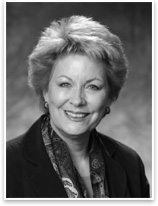 Bonnie Staiger, Hon. AIA Bonnie Staiger, Hon. AIA
Bonnie Staiger has served as executive director of AIA North Dakota since 1998 and has been an outstanding leader of the national Council of Architectural Component Executives, serving as CACE President in 2007, president-elect in 2006, and on the national executive committee since 2003. Her dedication and wide-ranging interest also have led her to service on the AIA’s Licensing Committee, Long Range Planning Advisory Group, Board Advocacy Committee, and Secretary’s Advisory Group. In addition to her work with AIA North Dakota, Staiger also works in a similar capacity on the North Dakota Licensing Board. Staiger’s skills in bringing people together have helped develop stronger ties between AIA North Dakota and the chapter’s Association of General Contractors counterpart, and her skills as a lobbyist have helped both groups put forth legislation that has benefited the building industry as a whole. “All in all, her efforts on behalf of all North Dakota architects have brought AIA North Dakota and the entire profession in this state to a level of recognition and respect not seen in its history,” wrote Don Barsness, AIA, in his nomination letter on behalf of the AIA North Central States Region. “I strongly urge her consideration for this honor.”
 Lynda Stanley, Hon. AIA Lynda Stanley, Hon. AIA
Lynda Stanley, as executive director of the Federal Facilities Council and in her role at the Board on Infrastructure and the Constructed Environment, has been responsible for authoring and publishing a vast number of books and conference proceedings that have had a profound impact on the profession and the Institute. The FFC is an affiliation of 25 federal agencies involved with all aspects of facility design, acquisition, management, maintenance, and evaluation. It has built a bridge between the world of the real property and facilities design and engineering within federal agencies and the academic, professional, and commercial interests. Known as a consensus builder with tremendous “people skills,” her contributions have had and will continue to have a lasting and a profound impact on the quality of the built environment. “From my perspective as a member of TAP, Lynda’s works and efforts are and have been truly a catalytic force in revolutionizing the business and craft of pre-project planning, architectural design, construction, and life-cycle asset management,” writes Stephen R. Hagan, FAIA, member of the AIA Technology in Architectural Practice knowledge committee. “It is my distinct honor to sponsor and wholeheartedly support Lynda’s nomination for Honorary Membership in the Institute.”
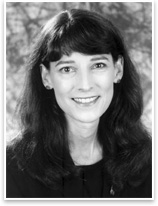 Marcy Stanley, Hon. AIA Marcy Stanley, Hon. AIA
AlA staff leader in New York, convener of symposia and seminars in several local AIA components, fundraiser for the Institute, a Board member of AIA New York, Marcy Stanley has served as a great friend to architects and a bridge between the architectural and engineering communities. Starting in 1994 as the AIA New York executive secretary, Stanley, who soon after became the chapter’s executive director, developed a passion for architecture and has continued to be an active friend of the chapter. Director of business development for the Weidlinger since 1999, Stanley led the renowned engineering firm to become an AIA passport provider. Through that program, Weidlinger has presented more than 60 continuing education programs for architects. Currently, she serves as development director on the AIA New York Chapter board. “I have seen Marcy Stanley in action, stepping up to the AlA plate to take on responsibilities, whether organizing fundraising campaign at all levels, or connecting architects with their peers in other parts of the building industry,” writes Executive Director Fredric Bell, FAIA, in his letter of nomination on behalf of AIA New York Chapter. “For what she has achieved over a period of 15 years, and for the contributions that she has made to the profession and the Institute, and with the certainty that this leadership role will continue, I feel strongly that she merits Honorary Membership.”
|
|


 Mijel Brazlavsky, Hon. AIA
Mijel Brazlavsky, Hon. AIA John Canning, Hon. AIA
John Canning, Hon. AIA David Crawford, Hon. AIA
David Crawford, Hon. AIA Dean E. Eastman, Hon. AIA
Dean E. Eastman, Hon. AIA Amy M. Kobe, Hon. AIA
Amy M. Kobe, Hon. AIA Margaret McDermott, Hon. AIA
Margaret McDermott, Hon. AIA Jane Nylander, Hon. AIA
Jane Nylander, Hon. AIA David Scott, PE, Hon. AIA
David Scott, PE, Hon. AIA Bonnie Staiger, Hon. AIA
Bonnie Staiger, Hon. AIA Lynda Stanley, Hon. AIA
Lynda Stanley, Hon. AIA Marcy Stanley, Hon. AIA
Marcy Stanley, Hon. AIA